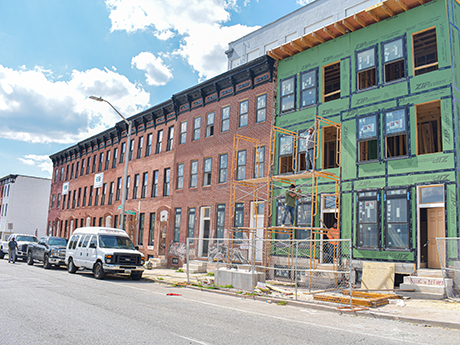BALTIMORE — Baltimore has launched a 15-year housing redevelopment program aiming to restore vacant buildings throughout the city. The plan is backed by $1.2 billion in public-fund commitments and an anticipated $5 billion in private financing. City leaders say the plan will revitalize more than 65,000 properties across Baltimore. The redeveloped homes will be a mix of rental and for-sale housing.
The City of Baltimore has approved the plan and public funding, while the Greater Baltimore Committee (GBC), a nonprofit, private-sector business advocacy group, is helping to coordinate private sector partners. The work is being led by the GBC, the mayor’s office and nonprofit community development organization BUILD Baltimore. All efforts are being coordinated through Reinvest Baltimore, a group consisting of city, state and private sector partners, that Gov. Wes Moore established via executive order in October 2024.
The newly announced plan is backed by public funding that includes $300 million from the City of Baltimore, including an affordable housing tax increment financing program, and $900 million from the State of Maryland. The project will first revitalize 37,000 vacant or at-risk properties then fund a remaining 33,000 houses and lots through private capital. GBC is seeking a partner to design a private capital strategy.
“As a core economic development priority, the public dollars committed to this effort are designed to catalyze significant private-sector investment, grow our population and strengthen neighborhoods,” said GBC President Mark Anthony Thomas. “By bringing together civic leadership, private capital and community partners, Baltimore is setting a new national benchmark for city revitalization.”
Public Financial Management Systems, a national consulting firm that advises governments on fiscal strategy, projects more than $7.3 billion in economic value from the program over the next 30 years, driven by increased tax revenue, job creation and rising property values.


